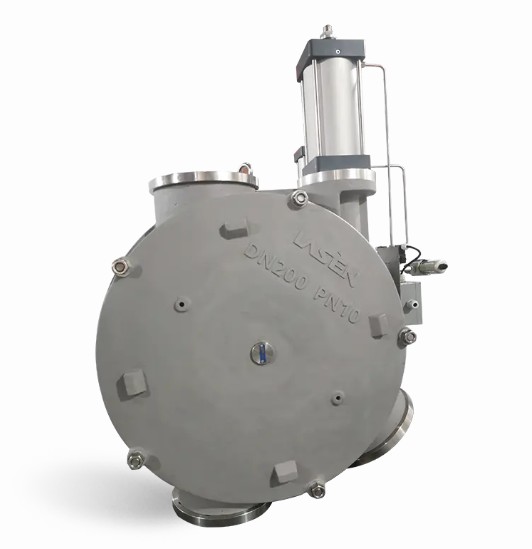Product Consultation
Your email address will not be published. Required fields are marked *

Sealing performance of custom cut-off ball valves
Mar 31,2025
How to choose the appropriate dual-channel diverter reversing valve model and specifications based on fluid characteristics and system requirements?
Mar 17,2025
Balance sleeve: the cornerstone of stable control of linear pressure control valve
Mar 10,2025
Working principle of nitrogen sealing self-operated control valve
The nitrogen sealing self-operated control valve mainly relies on internal pressure sensing elements (such as diaphragms or pistons) to sense changes in system pressure, and drives the valve core to move through the transmission mechanism connected to it, thereby adjusting the flow of the medium. When the system pressure is higher than the set value, the sensing element is deformed by force, driving the valve core to move in the closing direction, reducing the medium flow, thereby reducing the system pressure; conversely, when the pressure is lower than the set value, the valve core moves in the opening direction, increasing the medium flow and increasing the system pressure. This process does not require external energy and is completely completed by the energy of the medium itself, so it is called "self-operated".
The role of adjusting screws
As an important part of the nitrogen sealing self-operated control valve, the key role of the adjusting screw is to allow the user to accurately adjust the set pressure value of the valve according to actual needs. The adjusting screw is usually located outside the valve. By rotating the screw, the preload of the internal spring can be changed or the position of the pressure sensing element can be directly affected, thereby changing the opening or closing pressure point of the valve. This design gives the nitrogen sealing self-operated control valve great flexibility, enabling it to adapt to a variety of complex working environments and pressure requirements.
For example, in chemical production, different reaction stages may require different pressure conditions. By simply adjusting the adjusting screw, the operator can quickly adjust the valve's set pressure to the target value without replacing the entire valve, greatly saving time and cost. In addition, in the face of seasonal temperature changes caused by the expansion or contraction of the medium, the adjusting screw can also help maintain the constant system pressure and ensure the continuity and stability of the production process.
Performance optimization and practical application
The design of the nitrogen sealing self-operated control valve equipped with an adjusting screw not only improves its adaptability and flexibility, but also provides the possibility for performance optimization. Through fine adjustment, pressure fluctuations can be minimized and overpressure or underpressure can be avoided, which is of great significance for protecting downstream equipment, improving product quality, and reducing energy consumption.
In practical applications, users should reasonably set the position of the adjusting screw according to specific process requirements, combined with factors such as the nature of the medium, flow range, and system pressure fluctuation range. At the same time, regular inspection and calibration of the adjusting screw to ensure its accuracy is also the key to maintaining long-term stable operation of the valve. With the development of intelligent technology, some advanced nitrogen sealing self-operated control valves have also incorporated electronic monitoring and remote control functions, further improving the regulation accuracy and convenience.

Structural design of linear pressure control valve: the cornerstone of accuracy and stability
Nov 08,2024
Application potential of carbon steel eccentric butterfly valve: excellent performance in specific media
Nov 22,2024Your email address will not be published. Required fields are marked *
Copyright © 2023 Zhejiang Lasen Intelligent Equipment Co., Ltd. All Rights Reserved. Lasen Flow Control Valve Manufacturers Privacy Policy
